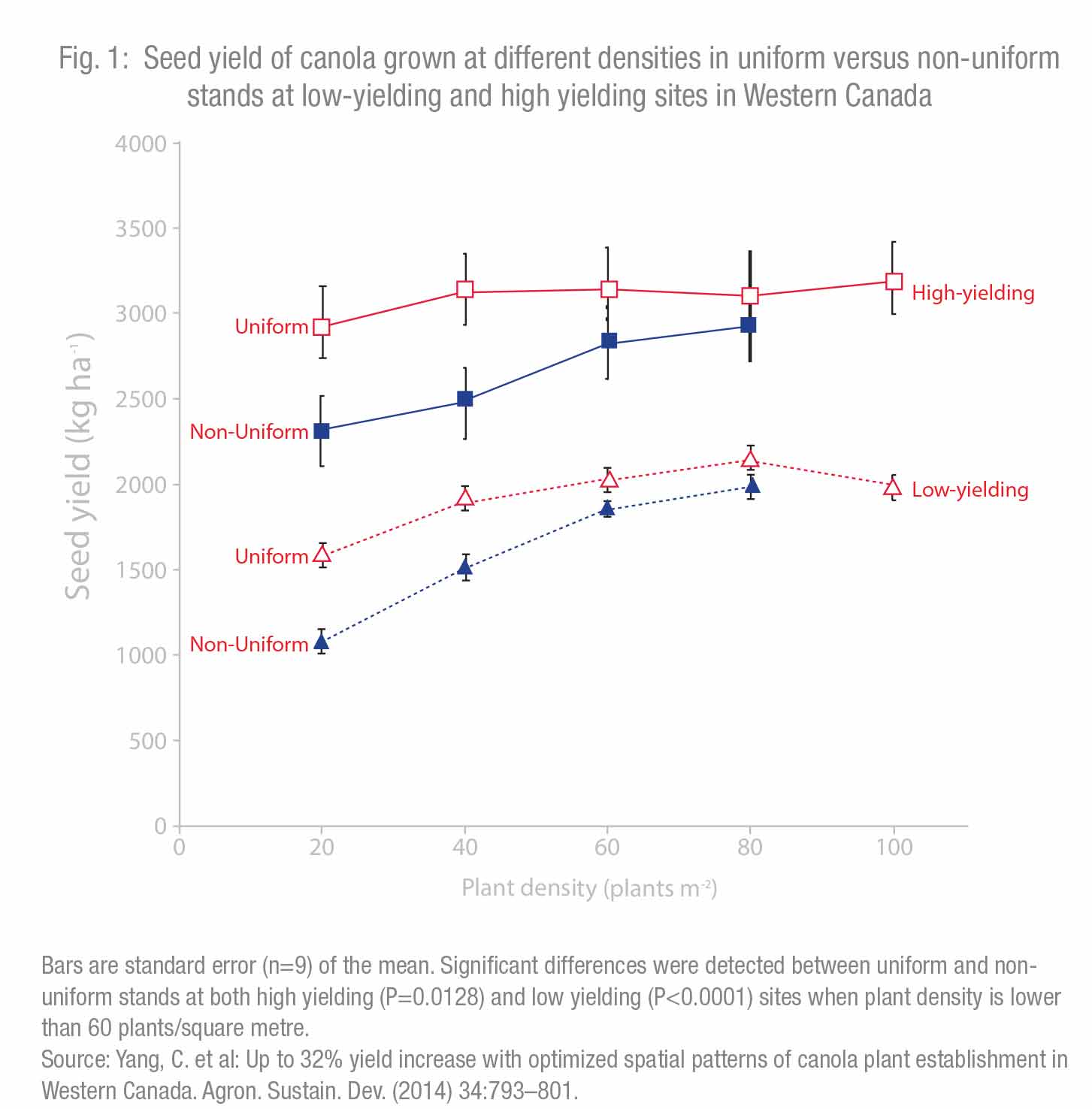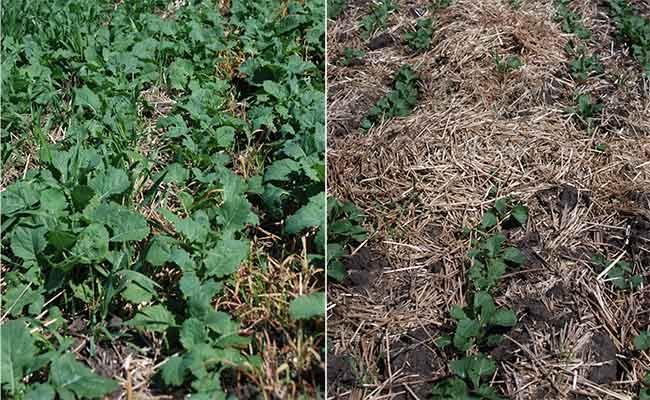
News
Higher yield with uniform plant stands
What’s the cost of an uneven, thin canola plant stand? Western Canadian researchers have put a number to it. Spatially uniform plant stands increased canola yield by up to 32 per cent at low-yielding sites and by up to 20 per cent at high yielding sites compared to non-uniform plant stands.
“For the first time, this comprehensive field experiment, conducted at the multiple sites and years across various climate-soil zones of the Canadian prairies, shows the importance of plant stand uniformity for efficient utilization of environmental resources to enhance pod formation and seed set and increase seed yield,” says Yantai Gan in an Agronomy for Sustainable Development article published in October 2014.
Gan is a research scientist at Agriculture and Agri-Food Canada (AAFC) at Swift Current, Sask. He conducted the research along with AAFC colleagues Chao Yang, Neil Harker, Byron Irvine and Bill May, University of Saskatchewan researcher Randy Kutcher, and University of Manitoba researcher Rob Gulden.
Field experiments were conducted at 16 site-years across the Prairies from 2010 to 2012. The Liberty Link variety InVigor 5440 was seeded at Carman, Lacombe, Melfort and Swift Current in each of the three years, at Brandon in 2010, Indian Head in 2011, and Morden in 2011 and 2012. Herbicides, fungicides and insecticides were applied as needed.
Plant stand densities were targeted at 20, 40, 60, 80 and 100 plants per square metre with uniform and non-uniform stands. (The Canola Council of Canada recommends a plant stand of 70 plants per square metre for optimum yields.) Uniform stands were established by seeding with a plot drill in the first to second week of May. Non-uniform plant stands were established by first seeding at the 100 plants per square metre target rate, and hand thinning at the three-leaf stage to achieve the targeted non-uniform plant stands.
Three weeks after emergence, the researchers measured plant density and calculated emergence rate. At maturity, plant survival rate was calculated along with a measurement of number of fertile pods per square metre and seed yield.
Yield impacted by seeding rate, uniformity
Data analysis grouped the research sites as high yielding at Lacombe 2010, Lacombe 2011, Lacombe 2012, Melfort 2010 and Melfort 2011 with an average yield of about 65 bushels per acre (3690 kg/ha). The other 11 sites were grouped as low yielding with an average yield of about 31 bushels per acre (1780 kg/ha).
“At both high yielding and low yielding sites, uniform plant establishment had higher seed yields compared with non-uniform plant establishment under the same plant density,” Gan reports. (See Fig. 1.)
The effect was most pronounced at the low yielding sites where uniform stands increased seed yield from seven to 32 per cent, depending on targeted plant population; 32, 21, eight and seven per cent at the plant densities of 20, 40, 60 and 80 plants per square metre.
At high yielding sites, uniform stands increased seed yields by 21 per cent for plant densities lower than 60 plants per square metre. However, there was no difference in canola yield between a uniform and non-uniform plant stand when plant density was higher than 60 plants per square metre.
“Seed yield differences between uniform and non-uniform plant stands at low plant densities was much greater than at high plant densities at both high yielding and low yielding sites,” Gan says.
The cost of thin, non-uniform stands is shockingly high. If your average yield is in the 30 bushel per acre range, a 32 per cent loss is 9.6 bushels per acre or about $96 per acre. At an average yield of 65 bushels per acre, the 21 per cent loss is 13.7 bushels per acre at about $137 per acre.
The research highlights the importance of two factors in optimum canola yield. First, target a stand establishment of 70 plants per square metre. Second, ensure stand establishment is uniform, which can be achieved through using treated seed, seeding shallow into a firm, moist seedbed and seeding at a speed that ensures accurate seed placement. Uniformity of stand can help overcome poor stand establishment.
November 2, 2015 By Bruce Barker
 A uniform plant stand yielded up to 32 per cent higher than a non-uniform plant stand. What’s the cost of an uneven
A uniform plant stand yielded up to 32 per cent higher than a non-uniform plant stand. What’s the cost of an uneven